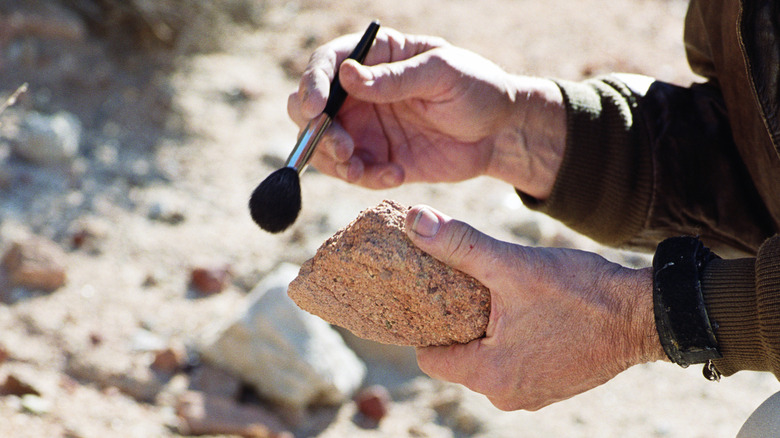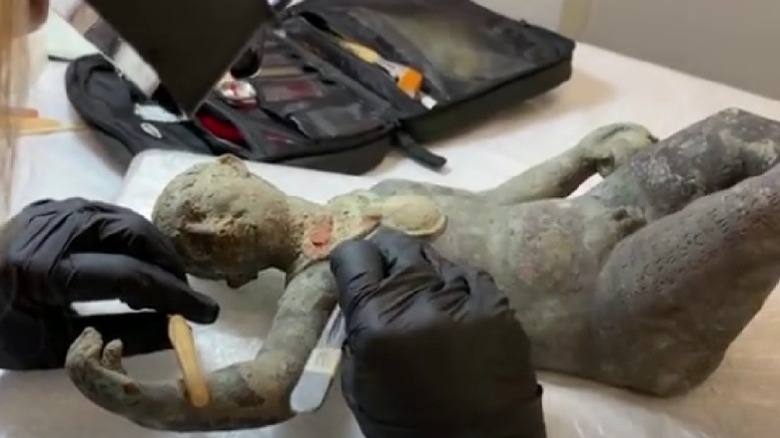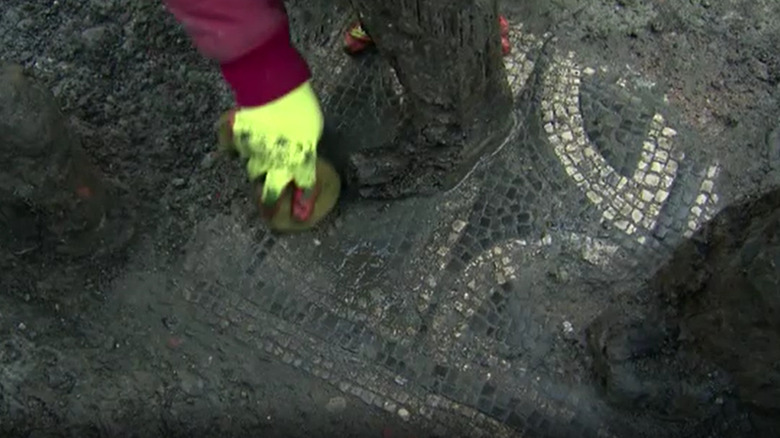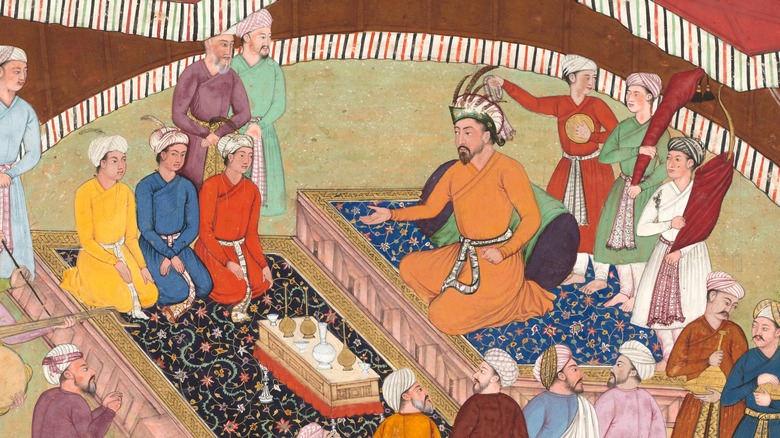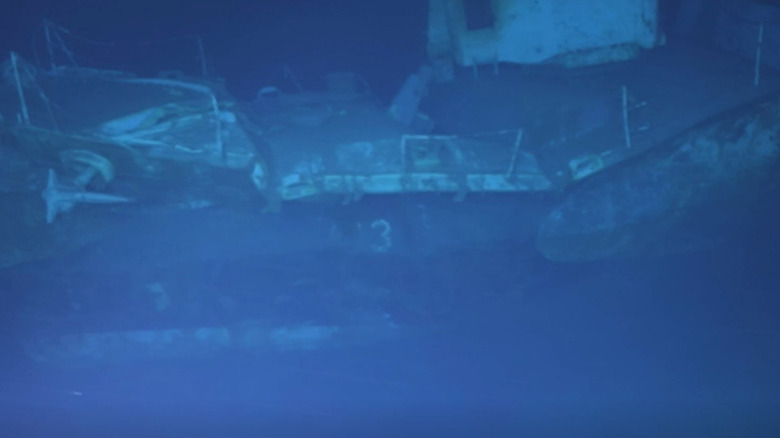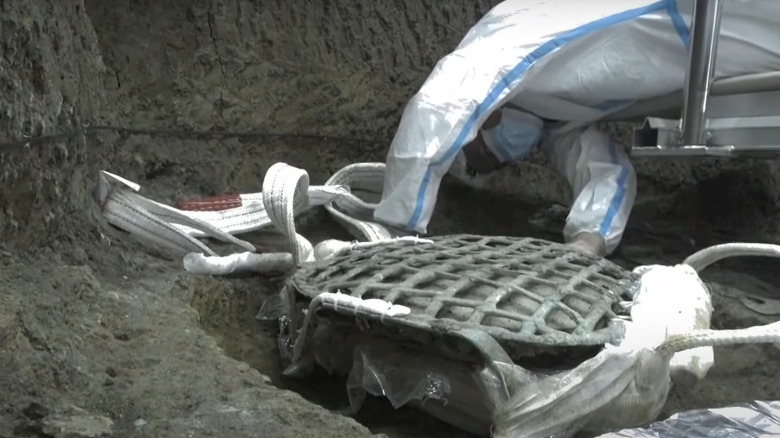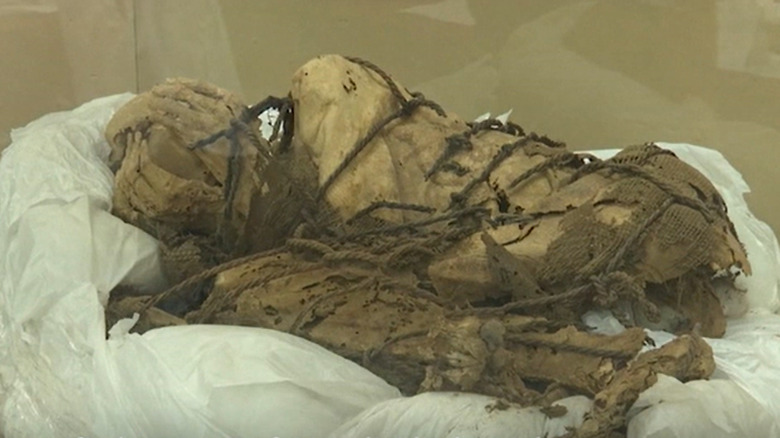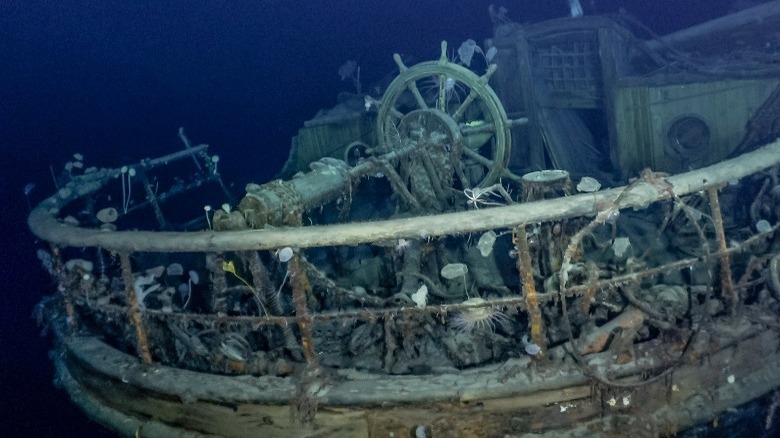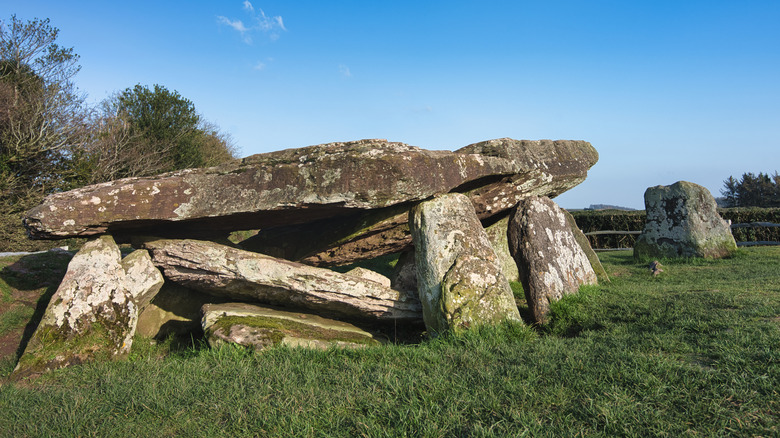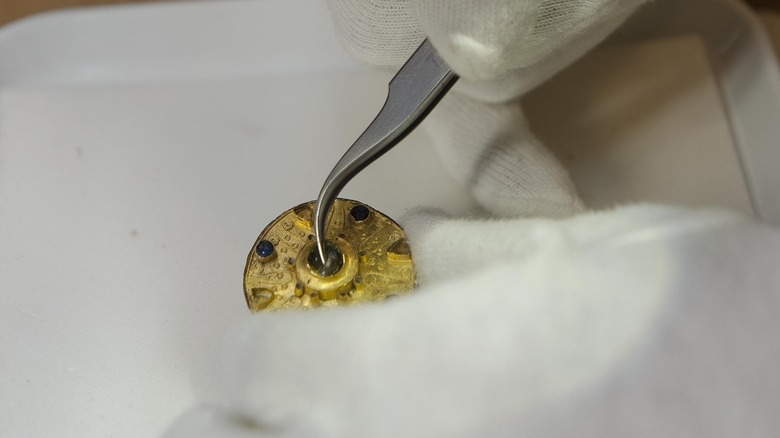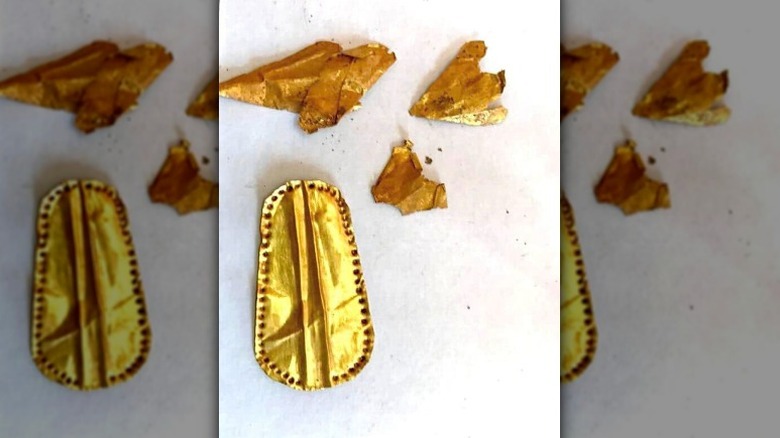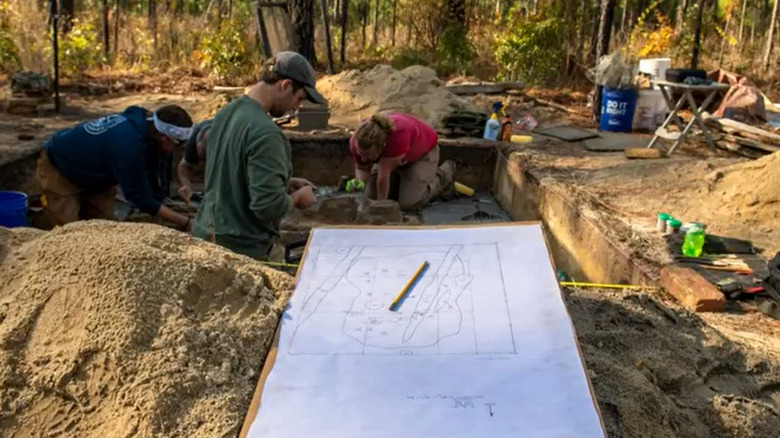2022's Most Stunning New Historical Discoveries
It's tempting to think of history and archeology as static. After all, they're fields concerned with the past, with what has already happened. And the classic image of the archeologist, shaped by the likes of Indiana Jones, suggests treasure hunters combing lost civilizations for museum pieces in decades several degrees removed from our own. "Historian" can seem like just a descriptive given to a talking head on a TV documentary or the title of that professor whose class you slept through.
But archeology is a science, and science is always progressing. There are new discoveries about our past, some of them quite spectacular. Archeology Magazine named 10 developments in 2021, ranging from precinct boundary markers to an entire lost city in Egypt. And at the beginning of 2022, Live Science named several promising archeological sites for future revelations about the ancient world. The year has seen many notable developments in archeology and history of a more recent vintage. Here are some of the most stunning historical discoveries of 2022.
24 bronze statues were found in Tuscany
2022 saw a rather picturesque development in archeology, something like the classic image of uncovering lost treasures. Per The Guardian, 24 bronze statues and thousands of gold coins were found in the Tuscany region of central Italy. The excavation site, located near a modern spa in San Casciano dei Bagni, hosted baths built over hot springs in the Etruscan and Roman periods, and the statues date to Etruscan times. The springs likely became dormant around the fifth century, but the mud and hot water in the region preserved the statues, which depict various gods and men.
Assistant professor Jacopo Tabolli told Reuters that the statues were probably deliberately submerged as an offering to the water. He also told Italian news agency Ansa (via the Guardian) that the new site is the only such collection of ancient Italian statues whose context can be deduced. The presence of both Etruscan and Latin writing, and the dating of the statues between the second century B.C. and the first century, suggest that the baths were a place of peace between the otherwise conflicting Etruscan and Roman civilizations.
A Roman mosaic was found in London
Major archeological finds aren't only to be found in deserts, jungles, and abandoned ruins. Some remarkable pieces of history have been unearthed in the heart of thriving metropolises. In 2022, according to CNN, a preliminary excavation team working near the Shard, London's tallest building, found a beautiful two-part Roman mosaic decorated with floral and knotted patterns ahead of planned construction work.
Representatives of the Museum of London Archeology dated the larger piece of the design somewhere around the turn of the third century, with indications it was built over an even older mosaic. The site is believed to have once been home to a mansio, the ancient Roman equivalent of a fancy hotel, and the mosaic would have decorated the floor of a dining room for well-off travelers. Besides its remarkable state of preservation, the find is notable because mosaics of this kind were rare even in Roman times in London. The city's reputation for crowding made it an unpopular building site for such works.
A dig in Turkey found a lead on the khan's palace
Real archeology isn't the one-man enterprise of the Indiana Jones films. Often, it isn't even a one-university or one-country enterprise. In 2022, a team of Turkish and Mongolian archeologists working under the National University of Mongolia came together for a joint expedition in Van, an eastern province in Turkey (per the Daily Sabah). Their goal is to find the summer palace of Hulagu Khan.
Hulagu, a grandson of Genghis Khan and founder of the Il-Khanid dynasty, according to Britannica, is believed to have built a summer palace for himself, and a church for his wife, in what is now the Çaldıran district of Van. Guided by artifacts found on the Çaldıran Plain held in the Van Museum, the team returned to the same site and found traces of a caravanserai, a type of inn for travelers (per National Geographic). Historical sources indicate that a city lay to the east of the inn, and ceramics found in the same area match comparable pieces from Mongolia, indicating that the area was an Il-Khanid settlement. The researchers are hopeful that the city and the palace might be detected nearby.
A World War II ruin is the deepest shipwreck known
Not every historical discovery of 2022 falls under the province of ancient archeology. Some findings have come from comparatively recent history. Nor is everything worth finding found by dedicated researchers. Per the BBC, it was a wealthy self-styled adventurer, Victor Vescovo of Texas, who came upon the deepest-known shipwreck as of December 2022.
Vescovo's reputation as an adventurer isn't unearned. He's a former navy reservist, he's gone into space, and he was the first person to reach the deepest points of all the world's oceans. He's also not a stranger to shipwrecks; he and his team found the USS Johnson in 2021. In June of 2022, Vescovo's submarine came upon the wreck of the USS Samuel B Roberts in the Philippine Sea at a depth of nearly 7,000 meters (for context, the vast majority of the ocean floor is less than 6,000 meters deep).
The USS Sammy B, as the ship is colloquially known, was a navy destroyer used in World War II. It faced off against more deadly Japanese ships in October 1944 in the Battle Off Samar, and it ran out of firepower before it took damage and sunk. Eighty-nine sailors went down with it, and the survivors were adrift at sea for 50 hours. While the Samuel B Roberts foundered, the intensity of the fighting — part of the larger Battle of Leyte Gulf — forced the Japanese navy to withdraw from the region.
A treasure trove was found in China
Archeological finds are rarely massive, beautiful, and intact masterpieces of the ancient world. Scraps, traces, and fragments are the norm. But sometimes, X does mark the spot of spectacular treasure troves. CNN reported in June 2022 that a new series of artifacts were recovered from the Sanxingdui archeological site, near the city of Chengdu, China. Over 13,000 relics have come out of Sanxingdui; the current crop adds 3,155 to the total.
The Sanxingdui were also an ancient people who are believed to have made up part of Shu, the state that once controlled the western Sichuan basin. But a paucity of evidence has left the Sanxingdui poorly understood. The dig site that bears their name has been active since 2020, and the hope is that the newest discoveries will offer some fresh insight into them, and to Shu as a kingdom.
Among the relics found in 2022 were 2,000 bronze artifacts, largely whole ones. They include statues, household utensils, and a turtle shell-shaped box with jade, said by professor Li Haichao to be a possibly one-of-a-kind piece. Other artifacts seem to have come from different regions of China, indicating widespread travel and interaction between various groups of people. And what appears to be a sacrificial altar might help explain Shu religious practices, which are believed to have included ancestor worship.
Chickens were first domesticated in Thailand, much later than we thought
It's not quite as existential a question as "which came first — the chicken or the egg," but just how long chickens have been part of mankind's barnyard menagerie is open to speculation. The common view among historians has long been that we tamed them about 10,000 years ago. But new research out of British universities (via The Guardian) indicates that they were domesticated at a much later date.
Researchers from the University of Oxford, Cardiff University, and the University of Exeter argued that the first tame chickens came from Thailand (they are a native species of southeast Asian rainforests) and were lured into human settlements with rice. It has long been established that chickens didn't reach Europe until around 800 B.C. and were slow to reach farms in the north and west, but the research team said that the best evidence indicates they hadn't been tame for long in Asia either. After looking at skeletal remains from around the world, the oldest chicken they could find that was indisputably under human care was from Ban Non Wat and couldn't have been older than 1650 B.C.
Sacrificed children were found in Peru
Some historical and archeological finds inspire fascination and admiration for our ancestors, for the craftsmanship, courage, and ingenuity demonstrated by the writings and works they left behind. Others inspire horror at what sort of practices human beings once considered acceptable. Agence France-Presse (AFP) reported (via France 24) that the mummy of a likely nobleman, at least 1,000 years old, was found in a tomb in the pre-Incan mud city of Cajamarquilla, near the Peruvian capital of Lima, in November 2021. Mummification was a common practice among Andean peoples (per History), but more disturbing was what was archeologists said they found outside the nobleman's tomb in February 2022 (per Reuters).
There were six other mummies found at the site, all of them children. Pieter Van Dalen, who supervised the excavation, told AFP that the children were deliberately arranged around the tomb. His theory is that they were relatives of the nobleman and were deliberately sacrificed to follow him into the afterlife. The man himself is believed to have been young, around 20 years old. Nearby, seven non-mummified human remains and possible llama bones were also found.
The Endurance was found in Antarctica
Scientific expeditions can themselves become the subject of later expeditions. In the early 20th century, Sir Ernest Shackleton set out on what has become known as the Imperial Trans-Antarctic Expedition, the first attempted land crossing of the southernmost continent (per the BBC). Shackleton and his team set out on a sailing ship named the Endurance, but in 1915, the ship became trapped in pack ice. Everyone made it off, and Shackleton personally braved choppy waters to bring a rescue mission, but the Endurance was lost.
Over 100 years later, an expedition dubbed Endurance22, organized by the Falklands Maritime Heritage Trust, announced on its official website that they had found the ruins of Shackleton's doomed vessel in the Weddell Sea, and that the ship remains largely intact. Thanks to the frigid Antarctic waters, marine archeologist Mensun Bound told the BBC that the Endurance was the best-preserved wreck he had ever seen.
The team came upon the Endurance on an auspicious day, exactly 100 years since Shackleton was laid to rest. Under the international Antarctic Treaty, the Endurance is protected from any claim, and no relics can be removed from the site. But the ship has been colonized by various marine creatures, none of them the kind to destroy a ship after making a home in it.
Excavation began on Arthur's Stone
Whether King Arthur ever existed has long been in serious doubt. Nevertheless, a Neolithic structure in Herefordshire bears the name of Arthur's Stone, and various legends put it down as the place where Albion's king fought a giant or gave his prayers. According to CNN, its actual function was as a tomb, where bodies of the dead were likely left to rot down to the bone, then arranged as desired. C.S. Lewis supposedly modeled the sacrificial stone table of "The Chronicles of Narnia" on the structure (per The Guardian).
Arthur's Stone is a prominent site in Herefordshire, and the surrounding area has been studied by archeologists. But the tomb itself has been little explored by modern researchers, and its contents were scavenged long ago. But in summer 2022, the first archeological excavation of Arthur's Stone began. The hope is that any findings at or around the tomb will illuminate the ancient population of Britain at a time when there was a significant influx of people from mainland Europe. As of July 2022, findings indicate that Arthur's Stone may have been a hub for those who lived nearby, or somehow connected to other probable burial sites in the surrounding area. Its placement in relation to a nearby mountain called the Skirrid has also invited speculation of a possible connection between the sites.
Fresh jewels and warriors were found in Swiss graves
The city of Basel has been of interest to Swiss archeologists for some time. ART News says that a seventh century grave site in the city was first documented in the 1800s, and it's been the subject of excavations for several years according to Swiss Info. But some particularly striking discoveries came out of a series of graves found since the summer of 2022.
One of these graves held a warrior with a massive, sword-induced skull wound. Subsequently, 15 graves were found during construction work that graves archeologists believe were reserved for the well-to-do in the medieval community. The bodies found in these tombs were richly adorned with jewels and clothing. One young woman had a gold brooch, 160 pearls, and a belt made with iron and silver. The latest discoveries are set to go on public display in January 2023, when digging at the site will also resume.
Golden-tongued mummies were found in Egypt
Egypt has strong associations with archeology, and tombs, cities, and mummies are still being uncovered there to this day. The Quweisna necropolis, an excavation site in the Monufia governorate in the Nile Delta, has been the site of ongoing excavations. Past discoveries from Quweisna have included a black granite sarcophagus for a priest and a wide range of architectural styles; the necropolis seems to have endured through several eras of ancient Egyptian history (per Ahram Online).
In November 2022, Quweisna made headlines when the discovery of a set of mummies, dug up over the three months prior, were publicly announced. The mummies themselves weren't particularly fascinating; they were in a heavily deteriorated state, and the mudbrick tomb and various artifacts found with them were the greater focus of Egyptian Antiquities Sector head Ayman Ashmawi's comments to Ahram Online; they suggested another distinct style of architecture. But there was one distinguishing feature of the mummies: They were buried with tongues of gold. Writing about an earlier find of similar objects, the National News reported that the tongues were there to let the dead speak to Osiris, god of the underworld.
Revolutionary War skeletons were found in South Carolina
In 1780, in the thick of the Revolutionary War, the British forces under Gen. Charles Cornwallis scored a victory against the American colonists. According to History, Gen. Horatio Gates made the mistake of sending his severely ill troops against Cornwallis in Camden, South Carolina. Widespread dysentery blunted an advantage in numbers, allowing Cornwallis to kill or capture 2,000 Continental soldiers. The Battle of Camden was a disgrace for Gates, who at one time was pushed by dissenters as a worthier commander than George Washington. His command was turned over to Nathaniel Greene.
Over two centuries later, the battlefield became the subject of a historical dig. The Post and Courier reported in November 2022 that a team connected with the University of South Carolina had excavated 14 skeletons since September, some riddled with wounds from musket fire. Included among the dead was at least one Native American suspected to have fought on the side of the British. The condition of some of the burial sites indicates that the Continental dead were hastily covered, while at least one British soldier seems to have had a more formal funeral.
It's expected that the skeletons will be reburied in coffins with due pomp in April 2023. The dig that found them is an outgrowth of a project to make the historic battlefield a public venue. USC professor Steven Smith told the Post and Courier he's been investigating the area since 1998.
